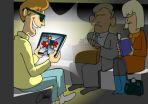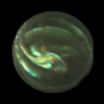(Press-News.org) Giving customers a chance to complain can be a bad idea if customers believe they're to blame for a product's failure, a new study from the Sauder School of Business at UBC shows.
"It's commonly assumed that giving customers a chance to voice grievances allows companies to maintain relationships," says Marketing Professor Darren Dahl, who co-authored the recent Journal of Marketing study with PhD student Lea Dunn.
"But our research shows that when a person feels implicated in a product's failure – think building Ikea furniture – they're more likely to shift blame to the product when complaining and increase ill will toward it."
In an experiment, subjects were divided into two groups and directed to replicate the preparation of an "award-winning smoothie." All of the participants were set-up to fail with poor quality food processors.
Half the group was made to feel the smoothie failure was their fault and the other half was told that it was likely a machine malfunction.
Participants primed to believe the failure was their fault rated the machine lower on a nine-point scale after complaining – 3.29 – versus the same participants who were not given the chance to complain – 4.31.
Participants primed to blame the processor rated the device higher after given the chance to complain – 4.02 versus 3 out of nine.
A further experiment showed that when self-blamers were provided with affirmative statements about their competence, they became more likely to rate a product favourably after complaining – 5.22 versus 3.36 on a nine-point scale.
"With companies turning to social media to communicate with consumers, the power of customer complaints has been amplified," says Professor Dahl. "Our study shows that companies shouldn't just let people sound off. They need to be stroking egos, as well."
###
CONTACT:
Andrew Riley
Sauder School of Business
Tel: 604.822.8345
Email: andrew.riley@sauder.ubc.ca END
Inviting customer complaints can kill business: UBC research
2012-11-29
ELSE PRESS RELEASES FROM THIS DATE:
Maths helps mobiles & tablets match eyes' ability to switch from sunshine to shadow
2012-11-29
Researchers have pushed the boundaries of High Dynamic Range (HDR) video to match our own eyes' ability to cope with the real world's ever rapidly changing light intensity - such as sun simply going behind clouds. Now researchers at WMG at the University of Warwick, have found a way to compress and stream HDR video directly to monitors and mobile devices, such as an iPad, bringing enormous benefits to industries including gaming and security.
Researchers at WMG at the University of Warwick, working in partnership with spinout company goHDR Ltd, have succeeded in achieving ...
First-ever hyperspectral images of Earth's auroras
2012-11-29
WASHINGTON, Nov. 29—Hoping to expand our understanding of auroras and other fleeting atmospheric events, a team of space-weather researchers designed and built NORUSCA II, a new camera with unprecedented capabilities that can simultaneously image multiple spectral bands, in essence different wavelengths or colors, of light. The camera was tested at the Kjell Henriksen Observatory (KHO) in Svalbard, Norway, where it produced the first-ever hyperspectral images of auroras—commonly referred to as "the Northern (or Southern) Lights"—and may already have revealed a previously ...
Bacteria hijack host cell process, create their own food supply to become infectious
2012-11-29
COLUMBUS, Ohio – Bacteria that cause the tick-borne disease anaplasmosis in humans create their own food supply by hijacking a process in host cells that normally should help kill the pathogenic bugs, scientists have found.
This bacterium, Anaplasma phagocytophilum (Ap), secretes a protein that can start this process. The protein binds with another protein produced by white blood cells, and that connection creates compartments that siphon host-cell nutrients to feed the bacteria, enabling their growth inside the white blood cells.
The finding defies conventional wisdom ...
Insects beware: The sea anemone is coming
2012-11-29
Bethesda, MD—As insects evolve to become resistant to insecticides, the need to develop new ways to control pests grows. A team of scientists from Leuven, Belgium have discovered that the sea anemone's venom harbors several toxins that promise to become a new generation of insecticides that are environmentally friendly and avoid resistance by the insects. Since these toxins disable ion channels that mediate pain and inflammation, they could also spur drug development aimed at pain, cardiac disorders, epilepsy and seizure disorders, and immunological diseases such as multiple ...
Brain inflammation likely key initiator to prion and Parkinson's disease
2012-11-29
Prion diseases represent a family of neurodegenerative disorders associated with the loss of brain cells and caused by proteins called prions (derived from 'protein' and 'infection'). The diseases are found in both humans and animals, such as Creutzfeld-Jakob disease and mad cow disease respectively. Although mostly harmless, prions can transform into infectious agents, which accumulate in the brain and destroy the nervous tissue.
But how exactly does the accumulation of prions cause destruction of the brain? "Understanding the process by which prions destroy neurons ...
New genetic test detects early breast cancer and identifies future risk
2012-11-29
Bethesda, MD—Physicians may now be better at detecting breast cancer than ever before, but much more work remains to ensure accurate diagnosis is possible and especially to assess future risk. That's why researchers from Germany have been working to develop a new test of gene action to predict cancer risk both at first diagnosis and into the future. In a new research report appearing in the December 2012 issue of The FASEB Journal, researchers show that the various genetic switches, which are turned on and off in the regular development of every cell in the body, can be ...
New approach allows past data to be used to improve future climate projections
2012-11-29
Climate scientists are still grappling with one of the main questions of modern times: how high will global temperatures rise if the atmospheric concentration of carbon dioxide doubles. Many researchers are turning to the past because it holds clues to how nature reacted to climate change before the anthropogenic impact. The divergent results of this research, however, have made it difficult to make precise predictions about the impact of increased carbon dioxide on future warming. An international team of scientists have evaluated previously published estimates and assigned ...
'Dark core' may not be so dark after all
2012-11-29
ATHENS, Ohio (Nov. 29, 2012)—Astronomers were puzzled earlier this year when NASA's Hubble Space Telescope spotted an overabundance of dark matter in the heart of the merging galaxy cluster Abell 520. This observation was surprising because dark matter and galaxies should be anchored together, even during a collision between galaxy clusters.
Astronomers have abundant evidence that an as-yet-unidentified form of matter is responsible for 90 percent of the gravity within galaxies and clusters of galaxies. Because it is detected via its gravity and not its light, they call ...
The future looks bright: ONR, marines eye solar energy
2012-11-29
ARLINGTON, Va. —The Office of Naval Research (ONR) is looking to the sun for energy in an effort to help Marines do away with diesel-guzzling generators now used in combat outposts, officials announced Nov. 29.
The Renewable Sustainable Expeditionary Power (RSEP) program seeks to create a transportable renewable hybrid system that can provide Marines with electricity for a 15-day mission without relying on fuel resupply convoys that often become targets for adversaries.
"This program takes on a number of power-related challenges and ultimately will allow the Marine ...
Mild vibrations may provide some of the same benefits to obese people as exercise
2012-11-29
Bethesda, MD—If you're looking to get some of the benefits of exercise without doing the work, here's some good news. A new research report published online in The FASEB Journal shows that low-intensity vibrations led to improvements in the immune function of obese mice. If the same effect can be found in people, this could have clinical benefits for obese people suffering from a wide range of immune problems related to obesity.
"This study demonstrates that mechanical signals can help restore an immune system compromised by obesity," said Clinton Rubin, Ph.D., study ...


